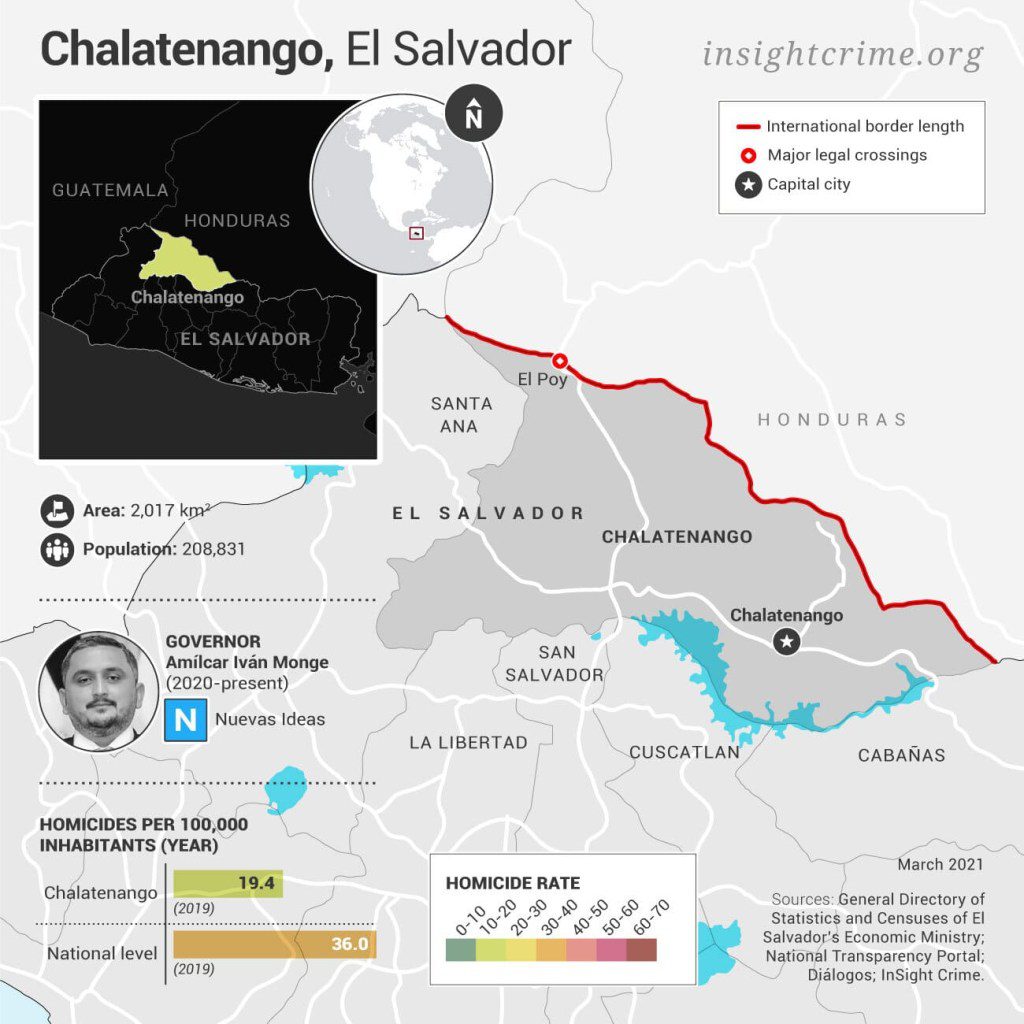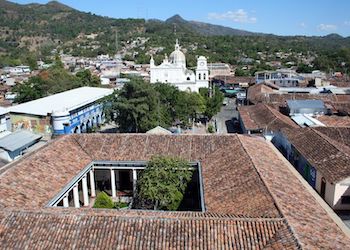Though not a major hub for transnational organized crime, the department of Chalatenango is a transit point for migrants, arms and drugs.
Criminal groups take advantage of numerous unguarded border checkpoints to smuggle illicit products between Honduras and Chalatenango. For some time, a cell of the notorious Mara Salvatrucha (MS13) street gang known as the Fulton Locos Salvatruchos partially controlled drug trafficking routes skirting the municipality of Nueva Concepción. The area has also served as an operational center for the gang’s criminal activities.


Criminal Actors
MS13: A cell of the MS13 — the Fulton Locos Salvatruchos — previously held control of some of the drug trafficking routes in and around Nueva Concepción — one of Chalatenango’s largest cities. Nueva Concepción also sits on a smuggling route crossing northern El Salvador. The MS13 purportedly has ties to local politicians, which may help protect its illicit activities.
Texis Cartel: The Texis Cartel, one of El Salvador’s main drug-smuggling groups, has historically controlled cocaine routes in Chalatenango, operating as a logistics provider for Mexican cartels. The group’s connections have reached the upper echelons of Salvadoran politics, allowing it to shield its operations in Chalatenango and elsewhere. Some of the Texis Cartel’s alleged leaders have been arrested, but remnants of the group appear to have remained active along the same land routes.
Criminal Economies
Arms Trafficking: Chalatenango’s porous northern border with Honduras is reportedly an entry point for illegal firearms smuggled into El Salvador, but this appears to be one of the area’s more modest criminal economies. There are 16 “blind spots” along the department’s border with Honduras that serve as entry point for illegal arms smuggled from the south of Honduras into El Salvador.
Cocaine: Chalatenango is a transit point for cocaine. A highway passing through the department, connecting El Salvador to western Honduras, constitutes the main smuggling route in the area. Cocaine may be smuggled into Chalatenango via the El Poy customs checkpoint or unmonitored crossings on the border with Honduras. These routes are traditionally controlled by transportation networks with ties to larger drug trafficking organizations. In all, there appears to be at least a moderate cocaine economy in Chalatenango.
Cannabis: Chalatenango police have discovered marijuana crops in the department, albeit on a small scale. The cannabis is transported to San Salvador for consumption. There is also a healthy marijuana retail market in the department that appears to be controlled by the MS13. We, therefore, estimate that there is a mid-sized cannabis economy in Chalatenango.
Human Smuggling: We estimate that just over 2,100 Salvadoran migrants were returned to Chalatenango from the US and Mexico in 2019. Given the price of hiring a smuggler in the area (roughly $10,000), this appears to be a very lucrative criminal economy, potentially reaching into the tens of millions of dollars.
Extortion: Between 2013 and 2017, Chalatenango recorded the lowest amount of extortion cases of any department in El Salvador. However, in recent years, members of MS13 have increasingly imposed extortion fees on merchants, especially those from El Paraíso and Tejutla. Extortion may consist of a weekly or monthly fee targeting transport operators
Sources: This profile is based on a field investigation in Chalatenango and research in San Salvador, where InSight Crime interviewed the national anti-narcotics police, departmental police officials, former national police officers with knowledge of drug trafficking, the national institute for women’s development (Instituto Salvadoreño para el Desarrollo de la Mujer – ISDEMU), community development associations, and local journalists. InSight Crime also drew from information provided by the Government of El Salvador, the Economic Ministry’s General Direction of Statistics and Censuses (Dirección General de Estadística y Censos), municipal extortion data, the United Nations Office on Drugs and Crime (UNODC), the El Salvador-based Diálogos think tank, and local press reports.

